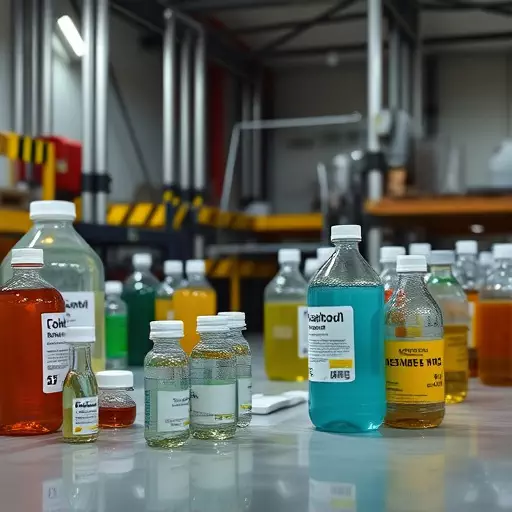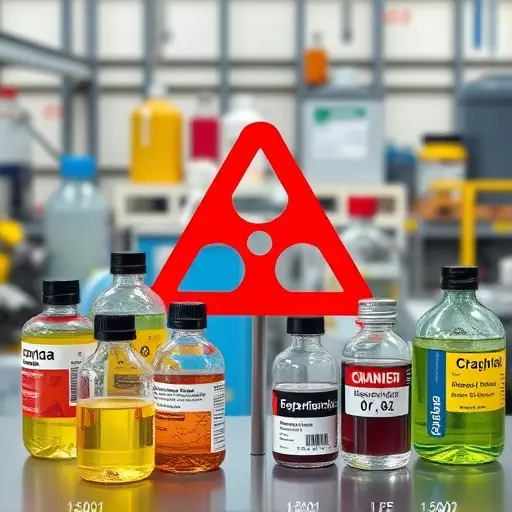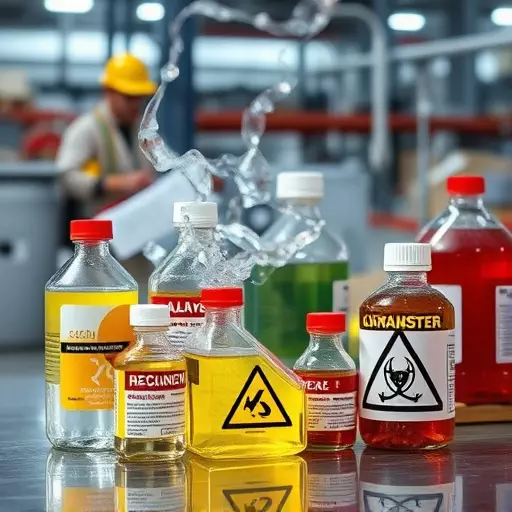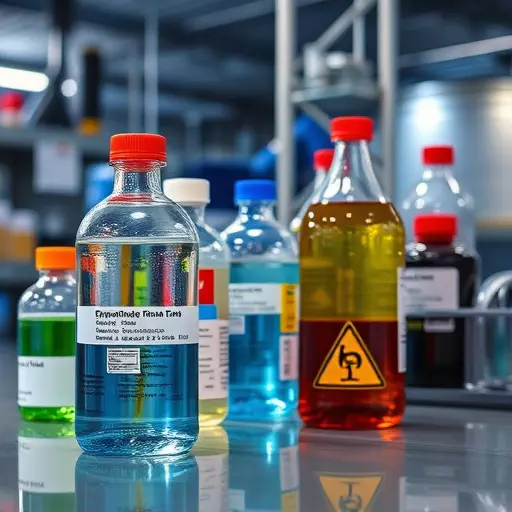Chemical exposure risk management is a critical component of creating safe industrial workplaces. It involves understanding and mitigating risks associated with hazardous materials through comprehensive workplace inspections, Material Safety Data Sheets (MSDS), and established risk assessment methods. Robust industrial hygiene protocols, including thorough material identification, proper handling, storage, and disposal, are essential. Employee training, regular monitoring, and the implementation of engineering controls like ventilation contribute to minimizing exposure risks. Ongoing evaluation through air sampling, biological monitoring, and symptom assessment is crucial for optimizing safety protocols and fostering a healthier work environment.
In today’s industrial landscape, effective chemical exposure risk management is paramount for creating safe workplaces. This comprehensive guide delves into crucial aspects of industrial hygiene protocols, offering insights into protecting workers from unseen dangers. We explore the significance of hazardous material identification as the foundational step in mitigating risks, coupled with practical strategies tailored to diverse industries. Best practices for implementing and enforcing safety measures ensure ongoing compliance, while monitoring and evaluating exposure management programs safeguard worker health over time.
- Understanding Chemical Exposure Risk Management: A Foundation for Safe Workplaces
- Industrial Hygiene Protocols: Protecting Workers from Unseen Dangers
- Hazardous Material Identification: The First Step in Effective Risk Mitigation
- Strategies for Minimizing Chemical Exposure in Various Industries
- Best Practices for Implementing and Enforcing Safety Measures
- Monitoring and Evaluating the Success of Exposure Management Programs
Understanding Chemical Exposure Risk Management: A Foundation for Safe Workplaces

Chemical exposure risk management is a cornerstone of creating safe and healthy workplaces, especially in industrial settings where hazardous materials are commonly used. It involves a comprehensive understanding of potential risks associated with chemicals, their properties, and the effects of exposure on human health. By implementing robust industrial hygiene protocols, organizations can ensure that employees are protected from harmful substances.
The first step is identifying hazardous materials present in the workplace through thorough inspections and material safety data sheets (MSDS). Once these hazards are mapped out, risk assessment methods help determine the potential for exposure and the level of risk associated with each chemical. This knowledge enables companies to devise strategies like engineering controls, personal protective equipment (PPE), and proper ventilation systems to minimize or eliminate risks. Effective communication and training on industrial hygiene protocols are vital to ensuring that employees understand their roles in managing chemical exposures and maintaining a safe working environment.
Industrial Hygiene Protocols: Protecting Workers from Unseen Dangers

Industrial Hygiene Protocols play a pivotal role in safeguarding workers from often unseen dangers associated with chemical exposure and hazardous materials. These protocols are designed to identify, assess, and mitigate risks prevalent in industrial settings. By implementing rigorous processes, organizations can ensure that employees are protected from potential harm caused by various substances.
Effective industrial hygiene practices involve thorough hazardous material identification, which is the first step towards comprehensive risk management. Once identified, these materials require appropriate handling, storage, and disposal protocols to minimize exposure risks. Regular monitoring and air quality testing help in detecting any harmful substances present in the work environment, enabling prompt corrective actions.
Hazardous Material Identification: The First Step in Effective Risk Mitigation

Identifying hazardous materials is a fundamental step in managing chemical exposure risks and ensuring industrial hygiene protocols are effective. This initial process involves thoroughly assessing and characterizing substances present in the work environment. By conducting comprehensive analyses, organizations can uncover potential hazards that may be invisible to the naked eye. For instance, certain chemicals can emit toxic fumes or have corrosive properties when exposed to specific conditions.
Accurate hazardous material identification empowers employers and employees alike to implement tailored risk mitigation strategies. It enables the development of robust safety protocols, including engineering controls, personal protective equipment (PPE), and comprehensive training programs. This proactive approach ensures that workers are equipped with the knowledge and tools necessary to handle hazardous materials safely, minimizing exposure risks and fostering a healthier work environment.
Strategies for Minimizing Chemical Exposure in Various Industries

Minimizing chemical exposure is a top priority for industries dealing with hazardous materials. Effective risk management begins with thorough industrial hygiene protocols that identify and assess potential risks. Companies should conduct regular inspections to ensure proper storage, handling, and disposal procedures are in place, adhering to industry standards and regulations. Employee training is another critical aspect; educating workers about the nature of chemicals they handle, personal protective equipment (PPE), and safe work practices can significantly reduce exposure risks.
Identifying hazardous materials is a foundational step. Chemical manufacturers, processors, and users must implement systems for accurate material tracking and labeling. This includes staying updated on Material Safety Data Sheets (MSDS) or Safety Data Sheets (SDS), which provide essential information about chemical properties, health effects, and safety measures. By combining these proactive strategies with regular monitoring and maintenance, industries can effectively manage chemical exposure risks, fostering a safer working environment.
Best Practices for Implementing and Enforcing Safety Measures

When implementing and enforcing safety measures for chemical exposure risk management, it’s crucial to start with comprehensive industrial hygiene protocols. These protocols should include regular monitoring and assessment of workplace environments to identify and quantify any hazardous materials present. This involves utilizing advanced sampling techniques and analytical methods to ensure accurate hazard identification. Once identified, clear communication about the risks associated with these materials becomes paramount. Employees must be educated on the proper handling, storage, and disposal procedures specific to each hazardous substance.
Best practices also dictate establishing well-defined work processes that minimize exposure risks. This could involve implementing engineering controls like closed systems, ventilation, or automated processes. Administrative controls such as standard operating procedures (SOPs) should also be put in place to regulate work tasks and ensure adherence to safety protocols. Regular training sessions and refresher courses can help maintain a culture of safety, empowering employees to recognize potential risks and take proactive measures to protect themselves and their colleagues from chemical exposure.
Monitoring and Evaluating the Success of Exposure Management Programs

Effective exposure management strategies require ongoing monitoring and evaluation to ensure their success. This involves regularly assessing worker exposure levels through air sampling, biological monitoring, and self-reported symptoms. By comparing these data with established safety thresholds and industry benchmarks, organizations can gauge the effectiveness of their chemical exposure risk management plans.
Industrial hygiene protocols play a crucial role in this process, as they provide structured procedures for identifying hazardous materials, evaluating risks, and implementing appropriate controls. Regular reviews of exposure data, coupled with feedback from employees and health professionals, help refine industrial hygiene practices, ensuring continuous improvement in managing hazardous material identification and worker safety.
